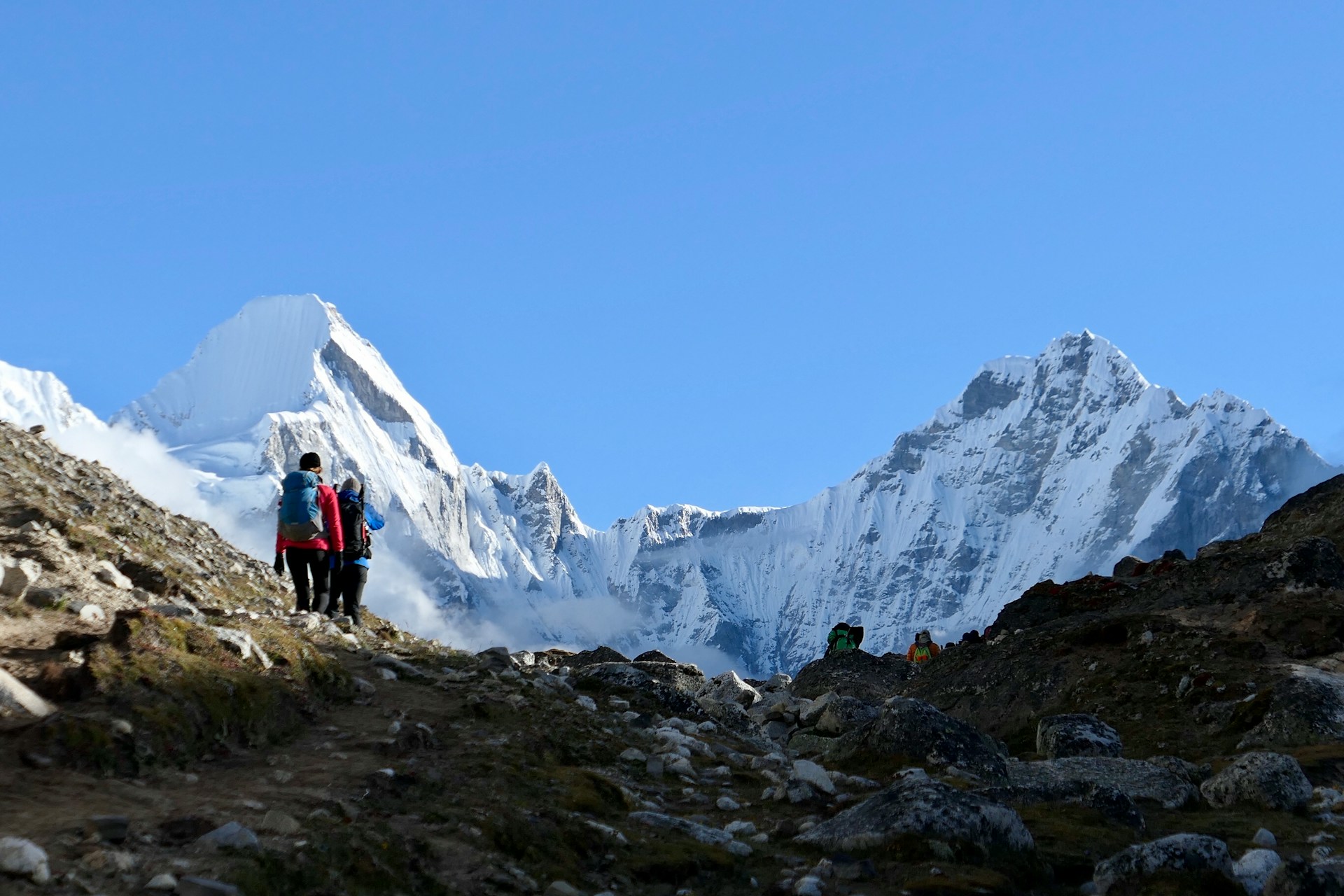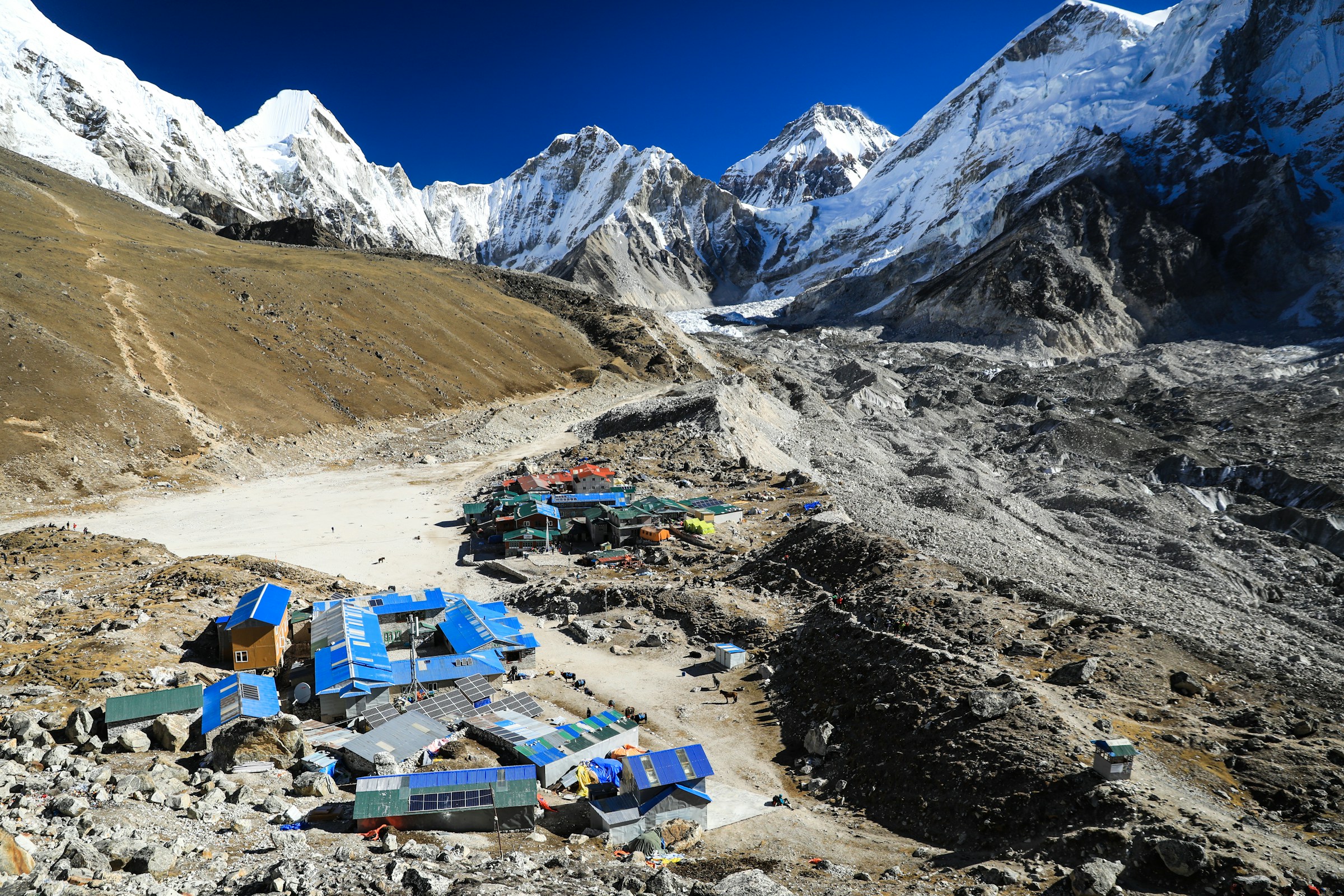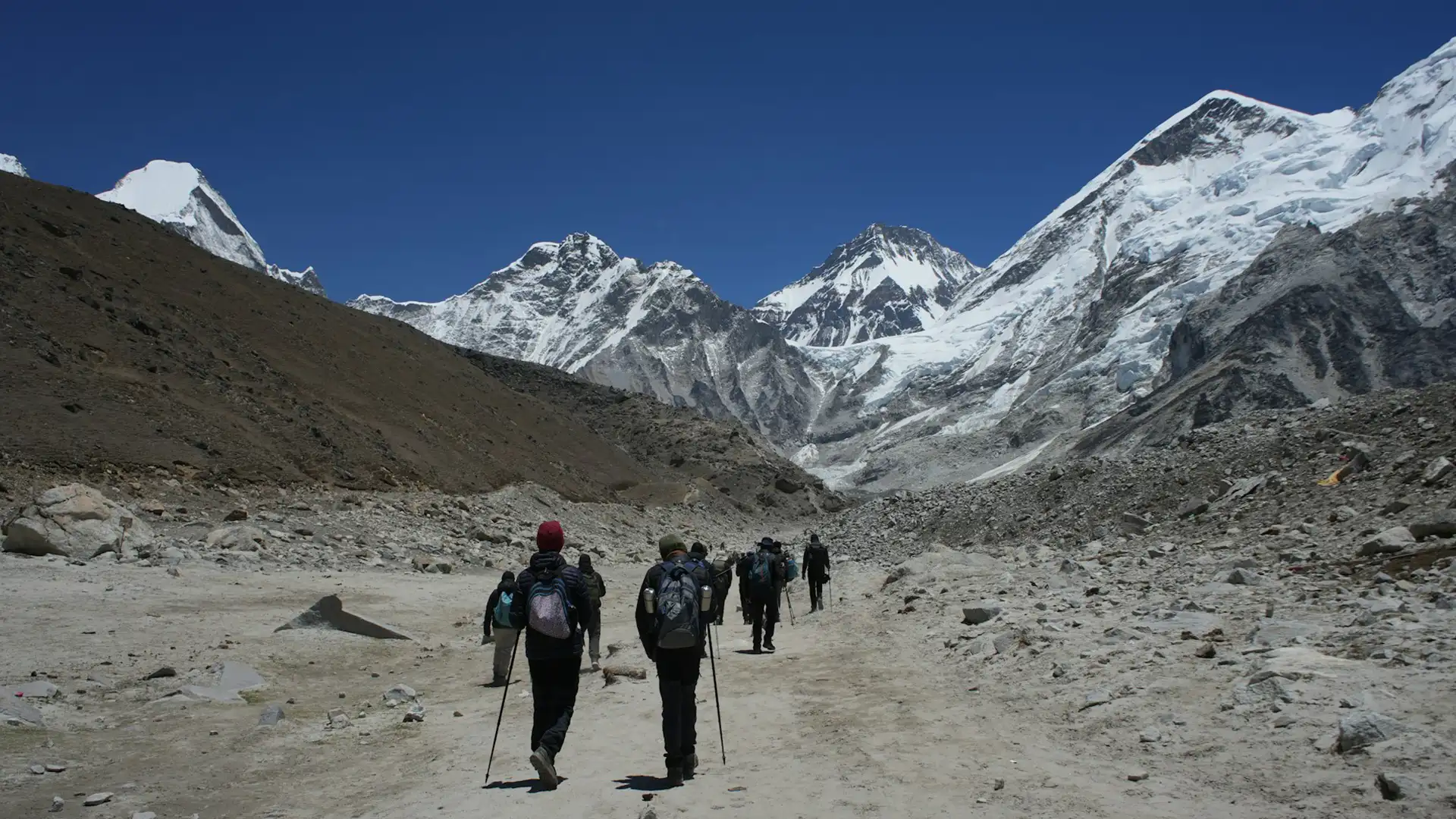Nepal’s majestic Himalayas have long attracted solo adventurers seeking personal challenge and spiritual connection. The allure of independent trekking through ancient trading routes, remote villages, and breathtaking mountain passes has created a surge in solo travelers exploring this mystical destination.
2025 marks a significant shift in Nepal’s trekking landscape. The government has implemented new regulations affecting solo trekkers, prioritizing safety and sustainable tourism. These changes reflect growing concerns about trekker safety and the preservation of Nepal’s natural and cultural heritage.
Key changes you need to know:
- Most solo treks now require licensed guides
- Enhanced permit systems with digital processing
- Strict enforcement of safety protocols
- Special provisions for low-altitude areas
The rising popularity of solo trekking in Nepal comes with increased responsibility. Recent statistics show a 30% increase in independent travelers attempting challenging routes like the Everest Base Camp and Annapurna Circuit. This growth has prompted authorities to balance adventure accessibility with trekker safety.
The question “Is solo trekking in Nepal safe in 2025?” requires understanding these new regulations and safety measures. Whether you’re planning your first Himalayan adventure or returning to explore new trails, staying informed about current requirements will ensure a rewarding and secure trekking experience.
Understanding the New Solo Trekking Regulations in Nepal for 2025
Nepal’s trekking landscape has undergone significant changes with the implementation of strict regulations affecting independent travelers. The government’s new policy effectively prohibits solo trekking across most regions, marking a substantial shift from previous years’ more lenient approach.
Key Changes in 2025 Regulations:
- Mandatory licensed guides for all high-altitude treks
- Comprehensive guide certification requirements
- Stricter enforcement of existing permit systems
- Enhanced safety protocols for all trekking activities
Licensed guides must now complete rigorous professional training covering:
- Advanced route navigation
- Emergency response procedures
- High-altitude safety protocols
- Cultural sensitivity training
- First aid certification
- Local ecosystem preservation
The government’s decision stems from multiple factors, including a rise in trekking-related incidents and the need to preserve Nepal’s rich cultural heritage. These regulations aim to create sustainable tourism practices while ensuring trekker safety in challenging mountain environments.
Exceptions to Guide Requirements:
- Day hikes near Kathmandu Valley
- Short treks under 2,000 meters
- Specific marked trails around Pokhara
- Select community-managed trekking routes
The certification process for guides has become more stringent, requiring:
- Minimum 3 years of trekking experience
- Advanced wilderness first aid certification
- Local language proficiency
- Environmental conservation training
- Regular skill assessment and updates
These new rules align with Nepal’s commitment to responsible tourism. The regulations protect both travelers and local communities while maintaining the authenticity of trekking experiences. Certified guides serve as cultural ambassadors, ensuring respectful interaction with local communities and proper use of established trails.
The Tourism Board maintains a database of authorized guides, allowing trekkers to verify credentials and read previous client reviews. This system provides transparency and helps maintain high service standards across Nepal’s trekking industry.
Trekking Permits and the New Online System: What You Need to Know
Nepal’s 2025 digital permit system streamlines the trekking documentation process. Here’s a breakdown of the essential permits you’ll need:
Required Permits for All Trekkers:
- TIMS Card (Trekkers’ Information Management System)
- Individual trekkers with guide: $17
- Group trekkers: $10 per person
- Valid for single entry
- National Park Entry Permits
- Standard fee: $25 per person
- Required for Everest, Langtang regions
- Valid for single entry
- Conservation Area Permits
- Cost: $25 per entry
- Mandatory for Annapurna, Manaslu regions
- Multiple entries not permitted
Restricted Area Special Permits:
- Upper Mustang
- $500 for first 10 days
- $50 per day after initial period
- Minimum two trekkers required
- Upper Dolpo
- $400 for first 10 days
- Group size restrictions apply
The new online permit system at permits.nepaltrekking.gov.np offers:
- Digital application submission
- Secure payment processing
- Real-time permit status tracking
- PDF permit downloads
- QR code verification system
Application Requirements:
- Valid passport scan
- Digital passport photo
- Proof of travel insurance
- Guide certification details
- Detailed trekking itinerary
The permit processing takes 2-3 business days. Your guide can assist with the application process, ensuring all documentation meets current requirements. The digital system includes automated verification points along major trekking routes, requiring QR code scans at checkpoints.
Remote areas might still require physical permit verification. Keep digital copies on your phone and print backups for areas with limited connectivity. The permit fees contribute to trail maintenance, local community development, and conservation efforts throughout Nepal’s trekking regions.
Routes Allowing Solo Trekking with Licensed Guides
Nepal’s 2025 regulations allow solo trekking with licensed guides on several iconic routes. Here’s what you need to know about the most popular trails:
1. Everest Base Camp Trek (EBC)
- 12-14 days round trip from Lukla
- Altitude range: 2,860m to 5,364m
- Guide requirement: Mandatory
- Best seasons: March-May, September-November
- Tea houses available throughout the route
2. Annapurna Circuit
- 14-21 days complete circuit
- Altitude range: 760m to 5,416m
- Guide requirement: Mandatory
- Multiple exit points for shorter treks
- Combines cultural experiences with mountain views
3. Annapurna Base Camp (ABC)
- 7-10 days round trip
- Altitude range: 1,000m to 4,130m
- Guide requirement: Mandatory
- Rich biodiversity and stunning landscapes
- Well-maintained trail infrastructure
4. Jomsom-Muktinath Trek
- 5-7 days one way
- Altitude range: 2,720m to 3,800m
- Guide requirement: Mandatory
- Cultural highlights and desert landscapes
- Accessible by flight to Jomsom
Solo Trekking with a Guide vs Independent Trekking
Trekking with a guide differs from independent trekking in several ways:
- You maintain control of your pace and daily schedule
- Guides handle logistics, permits, and accommodation bookings
- Local knowledge enhances cultural experiences
- Built-in safety support for emergencies
- Language barrier assistance with locals
- Professional altitude sickness monitoring
- Access to lesser-known viewpoints and side trails
- Flexibility to modify routes based on weather conditions
Your guide acts as a support system rather than a tour leader, allowing you to maintain the essence of solo travel while ensuring safety and compliance with local regulations.
Why Solo Trekking Without a Guide Is Mostly Banned: Safety Concerns and Cultural Respect
Nepal’s decision to ban solo trekking stems from critical safety concerns and the need to protect both trekkers and local communities. The high-altitude environment, such as that found in the Ausangate mountain, presents serious risks that inexperienced trekkers might underestimate:
Key Safety Concerns:
- Altitude sickness strikes without warning, even affecting experienced trekkers
- Limited mobile connectivity in remote areas delays emergency responses
- Sudden weather changes can trap unprepared trekkers
- Language barriers prevent effective communication during emergencies
- Unmarked or seasonal trail variations lead to navigation errors
Cultural and Economic Impact:
- Unregulated trekking disrupts local communities and their traditional ways of life
- Guides serve as cultural ambassadors, helping preserve authentic experiences
- Local economies depend on regulated tourism for sustainable income
- Licensed guides ensure fair distribution of tourism benefits across communities
The ban addresses a troubling pattern of rescue operations for solo trekkers who faced life-threatening situations. In 2024 alone, rescue teams responded to 127 emergency calls from solo trekkers, with 60% related to altitude sickness complications.
Trail conservation also plays a crucial role in the new regulations. Guided treks help maintain designated paths, reducing environmental damage from trekkers creating unauthorized shortcuts or camping in restricted areas. Licensed guides ensure responsible tourism practices while supporting local conservation efforts through proper waste management and resource use.
Furthermore, the absence of licensed guides not only jeopardizes the safety of individual trekkers but also puts immense pressure on wildlife, by disrupting their natural habitats during trekking expeditions. This highlights the necessity for regulated trekking practices that prioritize both human safety and environmental preservation.
Cost Breakdown for Hiring Guides and Porters in 2025: Understanding the Expenses Involved
Guide Costs
Licensed guides in Nepal charge $25-30 per day for their services in 2025. This rate includes:
- Professional navigation expertise
- Cultural interpretation
- Emergency assistance
- Accommodation arrangements
- Permit processing support
Peak Season Pricing (October-November, March-April)
During the peak seasons, guide rates increase to $35-40 per day. It’s important to note that advanced booking (2-3 months ahead) is required during this time, and there may be limited availability of experienced guides.
Off-Season Rates (December-February, June-September)
In the off-seasons, guide costs drop to $20-25 per day. This period offers greater availability of guides and room for price negotiation.
Porter Costs
Porter services cost approximately $10-12 per day, with rates varying based on:
- Trek difficulty
- Terrain conditions
- Load weight (typically 15-20kg maximum)
- Duration of trek
Peak Season Pricing (October-November, March-April)
During the peak seasons, porter charges rise to $15-18 daily. Similar to guide services, advanced booking is required during this time.
Off-Season Rates (December-February, June-September)
In the off-seasons, porter fees decrease to $8-10 daily. This period offers greater availability of porters and room for price negotiation.
Additional Costs to Consider
When budgeting for your trek, it’s essential to factor in these additional expenses:
- Guide/porter food and accommodation ($10-15 per day)
- Tips (10-15% of total service cost)
- Insurance coverage for guides/porters
- Extra rest day charges
Booking Tips
To find better rates for hiring guides and porters, consider the following tips:
- Book directly through registered trekking agencies in Kathmandu or Pokhara rather than online platforms.
- Local agencies often provide package deals combining guide and porter services at discounted rates for longer treks.
By understanding the cost breakdown and being mindful of additional expenses, you can plan your trekking budget more effectively and make informed decisions when hiring guides and porters in Nepal.
Essential Safety Tips for Solo Trekkers Using Guides: Staying Safe on the Trails
Your safety on Nepal’s trails requires specific preparations beyond hiring a guide. Here’s what you need to know:
Travel Insurance Requirements
- Purchase comprehensive travel insurance with helicopter evacuation coverage
- Minimum coverage amount: $100,000 for high-altitude treks
- Ensure policy includes altitude sickness treatment
- Keep digital and physical copies of insurance documents
Pre-Trek Safety Protocols
- Register your trek details with your embassy in Kathmandu
- Share detailed itinerary with trusted organizations like TAAN
- Take photos of important documents and store them in cloud storage
- Create emergency contact cards in English and Nepali
Communication Safety
- Buy a local SIM card with data package
- Download offline maps and emergency contact numbers
- Purchase or rent a satellite phone for remote areas
- Learn basic Nepali phrases for emergencies
Health Precautions
- Get altitude sickness medication from your doctor
- Pack a basic first-aid kit with prescription medications
- Carry water purification tablets or filters
- Schedule acclimatization days in your itinerary
Weather Safety
- Check weather forecasts regularly
- Pack appropriate gear for sudden weather changes
- Respect your guide’s decision to alter routes based on conditions
- Start early to avoid afternoon storms common in mountainous regions
Preparing for Independent Trekking Near Kathmandu and Pokhara: Low-Altitude Treks Without Guides Nepali Regulations 2025
The 2025 regulations maintain flexibility for independent trekking in specific low-altitude areas near Kathmandu and Pokhara. These zones allow you to trek without a mandatory guide, giving you the freedom to explore at your own pace.
Permitted Independent Trekking Areas Near Kathmandu:
- Nagarkot Hiking Trail (2,175m)
- Chisapani Trek (2,215m)
- Sundarijal-Shivapuri Trail (2,732m)
- Champadevi Day Hike (2,285m)
Accessible Routes Around Pokhara:
- Sarangkot Viewpoint Trek (1,592m)
- Australian Camp (2,060m)
- Dhampus Village Trail (1,700m)
- Peace Pagoda Loop (1,100m)
These trails feature:
- Well-marked paths
- Regular teahouses
- Cell phone coverage
- Quick access to medical facilities
- Easy transportation links
You’ll need basic permits for these areas, available at local tourism offices. The trails maintain good infrastructure with frequent signage in English. Pack light day-hiking gear – these routes rarely require technical equipment or extensive supplies.
Local guesthouses dot these trails, eliminating the need for camping gear. You’ll find regular water sources, small shops, and basic amenities along most routes. These paths serve as ideal training grounds for longer treks or perfect options for time-constrained travelers seeking authentic Nepali hiking experiences.
Special Considerations for Solo Female Trekkers in 2025: Navigating Cultural Sensitivities and Gender-Specific Challenges
Female trekkers in Nepal face unique considerations beyond standard safety protocols. The growing network of certified female guides offers valuable support, cultural understanding, and enhanced comfort levels for women traveling alone.
Key Benefits of Female Guides:
- Deep understanding of women-specific health needs
- Access to gender-segregated spaces and facilities
- Cultural navigation in conservative rural areas
- Enhanced communication with local women
- Personal safety advocacy in remote regions
Safety Protocols for Solo Female Trekkers:
- Book accommodations in advance during peak seasons
- Stay in well-reviewed teahouses with female staff
- Dress modestly – loose-fitting clothing covering shoulders and knees
- Carry a basic safety kit including personal alarm
- Keep emergency contacts readily available
- Use tracking apps shared with trusted contacts
Several women-focused trekking companies now operate in Nepal, offering specialized tours and female-only groups. These organizations prioritize women’s safety through careful route planning, vetted accommodation partners, and comprehensive support systems.
Cultural Sensitivity Tips:
- Respect local customs regarding physical contact
- Avoid trekking alone after dark
- Learn basic Nepali phrases for emergencies
- Connect with other female travelers at major stops
- Choose busy routes during off-peak hours
- Maintain awareness in isolated areas
The Nepal Tourism Board’s 2025 initiatives include dedicated support services for solo female travelers, including 24/7 helplines and women-specific safety resources at major trekking checkpoints.
Alternative Trekking Options Ideal for Solo Travelers: Exploring Less Restrictive Trails
Nepal’s 2025 trekking regulations still offer several exciting options for independent-minded travelers seeking less restrictive experiences. These alternative routes provide a perfect balance between adventure and safety while maintaining compliance with current guidelines.
Low-Altitude Valley Treks Near Kathmandu
- Nagarkot to Dhulikhel Trek (2-3 days)
- Shivapuri National Park trails
- Champadevi Day Hike
Accessible Routes Around Pokhara
- Sarangkot Sunrise Trek
- Australian Camp Circuit
- Dhampus Village Trek
These trails feature:
- Elevations below 2,500 meters
- Well-marked paths
- Regular teahouse stops
- Consistent mobile connectivity
- Quick access to medical facilities
- Active local communities
The Kathmandu Valley Cultural Trail stands out as a unique option, connecting ancient temples and traditional Newari villages. This network of paths allows you to explore at your own pace while staying within reach of urban amenities.
The Phulchowki Hill Trek presents another viable alternative, offering rich biodiversity and panoramic mountain views without strict permit requirements. You’ll encounter diverse flora and fauna while maintaining independence in your trekking schedule.
These routes provide authentic Nepali experiences while respecting the new safety guidelines. Many trails connect to local villages, creating opportunities for cultural immersion and comfortable accommodation options.
Conclusion
Solo trekking in Nepal has transformed in 2025. The new regulations prioritize safety through mandatory licensed guides, comprehensive permit systems, and structured support networks. You’ll find the Nepalese mountains accessible and secure when following these updated guidelines.
The question “Is it safe to trek alone in Nepal now?” has a clear answer: Yes – with a certified guide. These professionals enhance your journey with local knowledge, safety protocols, and cultural insights.
Your Nepal trekking adventure awaits with:
- Professional guidance and support
- Clear permit processes
- Enhanced safety measures
- Rich cultural experiences
- Peace of mind through regulated systems
The mountains of Nepal remain as majestic as ever – now with added layers of safety and structure for your solo trekking aspirations.
FAQs (Frequently Asked Questions)
Is solo trekking in Nepal safe in 2025 under the new regulations?
Solo trekking in Nepal in 2025 is generally safe when following the new government regulations, which mandate the use of licensed and certified guides on most popular treks. These rules aim to enhance safety and preserve cultural values, making guided solo trekking a secure option.
Do I need a guide for solo trekking in Nepal in 2025?
Yes, according to Nepal’s 2025 solo trekking rules, most solo trekkers are required to hire licensed and certified guides. However, there are exceptions for low-altitude areas and specific treks near Kathmandu and Pokhara where independent trekking without a guide is permitted.
What permits are required for solo trekking in Nepal in 2025, and how do I obtain them?
Trekkers need various permits such as the TIMS card, National Park Permits, and Conservation Area Permits depending on their route. In 2025, Nepal introduced an online permit application system that simplifies obtaining these permits, including those required for restricted areas like Upper Mustang.
Which trekking routes in Nepal still allow solo trekking with guides in 2025?
Popular routes like Everest Base Camp, Annapurna Circuit and Base Camp, and Jomsom-Muktinath remain accessible for solo trekkers when accompanied by licensed guides. Solo trekking without a guide on these routes is mostly banned due to safety concerns.
What are the typical costs involved in hiring guides and porters for trekking in Nepal in 2025?
Hiring a licensed guide typically costs between $25-$30 per day, while porter charges average around $10 per day. Prices may vary seasonally based on demand and availability.
Are there any safer alternative treks suitable for solo travelers wanting more independence in Nepal?
Yes, several less restrictive or lower-altitude trails near Kathmandu and Pokhara allow independent trekking without mandatory guides. These routes offer more flexibility for solo travelers seeking safer options under the new 2025 regulations.



